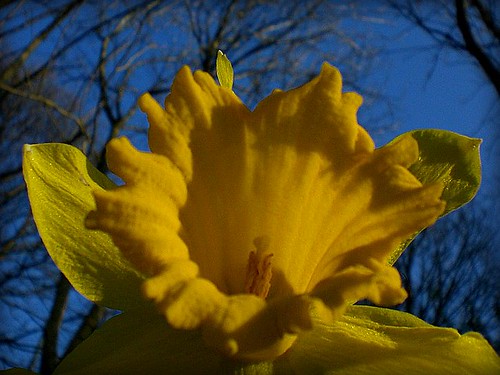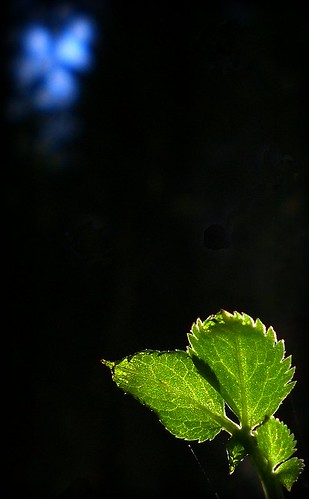Monday 23 March 2009
An Elusive Quality
His book also provided me the first tentative glimpse at what I have come to know as systems theory, the deconstruction of the metaphorical motorbike could be perceived as reductionism, but to me the intent was always to emphasise not the individual parts or mechanism, but their place in a more complex and richer system, one that transcended their sum. My eyes widened. As such, I always assumed that Pirzig’s mechanical metaphors were informed by a deeper understanding and were designed to lead the reader into a more valuable insight of Universe. Although it is inevitably insignificant, I assume that my own experience of Quality has been innately and indelibly defined by natural observation in the way that his was. I consider that the natural world is the primary inspiration for all beauty and the origin of all genuine value. I believe Pirsig’s Quality is indubitably tied to that same observational experience, a sense of value which, I believe, we have typically become existentially occluded from and often effectively oblivious to.
In the modern word we are effectively separated from the natural, particularly what little is left of the wild, and by and large we live in urban sprawls, that are increasingly the creations of idealistic (and opportunistic) planners, agriculture has made it inevitable. Contrived architectural parodies and disposable culture now serve our needs, never-mind our desires, some being more ambitious than others in included some green to balance out the concrete (and I don’t mean lawns). As a consequence we have come to be abstracted from this quintessential Quality; value and worth are now defined by the cost and cultural significance of our acquisitions. The notions of ‘value’ and ‘worth’ as we have debase-edly come to know, are however concepts that snap viciously at the heels of all that are embedded in the dying paradigm of infinite acquisition and growth.
Many of the products and pointless objects that litter our lives exist because of the inevitable acquisitiveness and hierarchical nature of the prime-ape Homo Sapiens Sapiens, for we use such objects as indicators that define our place and position in the social matrix, that we are so frustratingly indentured to. We are rewarded for our passive collective observances and acquiescences with shiny baubles and fancy candies. Compare a Papua New-Guinean cargo-cultist wearing a piece of a torn Cornflake box in his head-dress to a bland branded fool walking down your typical high-street. I make a gross point there, but one that needs reinforcing occasionally.
Similarly I feel the need to speak of the notion of negative value. Many of the objects beholden of this temporal, abstract value system have been made (or their substrates sourced) by peoples of limited means and of typically brutal circumstance. It is seldom acknowledged that this is the case, or more likely comfortably ignored and forgotten, even though the situation has been often and capably articulated by thems that are keen to look, or rather unkeen to look away. The concept of worth in these circumstances, exists at a strange crossroads, for example; a well respected designer might find their obscenely expensive, perhaps even beautiful, product, being made my sweatshop children (the literal value being horrendously detached from the market value as defined by this globalist opportunism). This random example is limited but can be considered to embody what I consider to be the debasement of worth and the distortion of value.
We live in a time that cults growth (and cargo), and simultaneously glorifies ignorance, in that we are effectively discouraged to learn. In this culture, marketeers and advertisers have had to find ways to negate an existing product or service, or either meta-attach some startling novel feature, to pimp the value of the Nu. Our jaded palates constantly need to be effected into a renewed salivation. The converse of this continual reinvention and repackaging of the already extant, is that if you don’t keep up, in the product owning and replacement race, you get left behind for cultural death. Mass-manufacturing economies rely on the existence of a permanently docile and labile consumer and depend on the relative disposability of their products and of their consumer’s insouciance to the concept of that waste.
How then do we define real value, real worth, ‘Quality’? I argue that once again we look back to where we have come from, that we be informed by the biosphere, the simple uncontrived beauty of a summer meadow or a Swallow on the breeze, the night sky, or the shape of each others hands, and by our best nature; our art and craft, our creative brilliance. This is not romanticism or idealism; well I don’t recognise it as such, but a simple pragmatism, a recognition; perhaps a painful remembering.
Take for example a flower, swaying in such a meadow, subtle evocative fragrances vapourous in the warm air, colour shocking to the unexpecting eye, insects buzzing almost lustfully; the thrumming patina of life. Now imagine that same flower as the subject of a painting; although the work is but a simulacrum of the original, a good artist will capture all the important qualities of the original, but can he manifest Quality? What of a photograph, what of a print of either, what of a memeory? An artist may not always be able to capture the quintessential Quality, but the nature of the artist is to be observant of that Quality and attempt to reconfigure it; a work of art then becomes almost the essence of such Quality, a focal distillation. The injection of care and intent and effectively love, become manifest in the art as that Quality, replacing what has been in lost in the translation of the sublime evanescent witnessing of the original.
Consider again that same flower in that same meadow from some other perspectives. The scientist might see a species in an ecosystem; he might be apartie to all of its mineral and metabolic cycles, of all the species that it sustains or is symbiotic with, and the fine detail of its anatomy, but having reduced it so, he might also be abstracted from its innate beauty and that same simple Quality, or like the artist he may have found that same Quality in that complexity. Imagine also an industrialist or a developer, even a farmer; a landowner, one that is not swayed by such a fickle awareness or simple pleasure, and only sees a plot of serviceable and productive land? We can see that each attaches a different set of values and their own subjective qualities, this is the problem of relative awareness.
What hope of our quintessential Quality and the reconfiguration of value? Our task is to re-inform those occluded from such an awareness, to reinvigorate the concept of Quality as value, as opposed to the rapacious value of abstracted ‘wealth’. Therein lies the essence of the problem, that of intrinsic and arbitrarily attached value. A bar of gold is tangible, perhaps pretty, and useful even, in ways that the deeper abstraction of currency cannot be, but you can’t eat it, never-mind love it. It might be argued that it does have Quality, but I think it would be a naïve and inevitably futile quality, pretentious and oblivious to genuine worth. Personally I’ll have the flowers and the bees and the stars and the shape of another's hand, any day.
Friday 13 March 2009
Addendum to D.O.G.M.A.
Homo sapiens sapiens, with its burden of (partial) consciousness, seems to rely on such dichotomic constructs to generate intellectual and psychological security; Good or Bad, Right or Wrong etc. are not concepts readily or oft questioned in their delineated essence. Even more problematic is the Cartesian division of mind and matter, which allowed pious scientists to construct a mechanistic model of the cosmos that did not offend the church; much of modern religiosity still substantiates on the foundation of this dualism (the confrontation of science and religion is in itself a false opposition, but one which requires its own rant anew). The dismantlement of certitude and such binary oppositional anchors in our noospace, is not easy and can serve to undermine individual and collective sanity, even when such deconstruction is desirable and potentially for the greater better.
As much as the void of the Theravadan Buddhists, or the abyss of Nietzsche, are a subject of great philosophical interest and epistemological value, they are equally a source of great individual and cultural anxiety, even when unrecognised. Similarly, the discoveries of quantum physics, with their inherent ambiguities, did not at the time lead to the deconstruction of the reductionistic paradigm itself or that of the mutually exclusive notions of wave or particle, but rather to confusion and vague attempts to anneal the false-opposition (one physicist even sardonically coined the term ‘wavicle’). Even worse were the attempts to shun the very science itself, with a desire to unobserve the observations, to escape from the revealed truth, to step back from insight.
We are deeply afraid of this mind-place, this Bardo dream-space, an apparently cold, seething, unrelenting chaos: an uncharted territory, devoid of certitude. It whispers to us, of madness, and of falling, and it inspires a child’s fear; a simple universal fear; the fear of being lost in the darkness, of being alone in infinity.
It seems that only the Taoists have managed to come close, historically, to managing duality and healing such false-oppositions; in the Taijitu. The dynamic dualism of Yin and Yang is embodied herein, they circle around each other, separated by a dichromatic threshold, the seed of each enveloped in the dividuation of the other; a subtle visual metaphor, rich in insight and intent.





